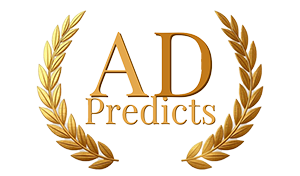If you’re reading this article, then you’re likely missing Barry right now.
Before Barry debuted its series finale last Sunday, Carl Herse sat down with Awards Daily to discuss his work across the entire season, a change from his partial lensing on Season Three. I’m sharing this information with you because, as I hadn’t seen the finale when I spoke with Carl, I did not have the opportunity to speak to him about his fantastic work in the series finale. I’m still thinking about that shot early in the episode, titled “wow,” where Barry marches into a department store to buy guns. He walks out in a long tracking shot with two massive rifles strapped to his back through nearly every department, filled with shoppers, with no one batting an eye.
It’s the simply brilliant lensing, shots that support a larger thematic narrative within the series, that we’ve come to expect from Barry cinematographer Carl Herse.
Awards Daily: Let’s start with you taking on all of Season Four where you you sort of split duties in Season Three. Talk to me about making that shift.
Carl Herse: Well, historically, the show has had one DP, but we’ve had a lot more directors and Bill [Hader] has directed a smattering of episodes, but we have a lot of different episodic directors. The thing that often happens with episodic directing and only having one cinematographer is that usually the director is prepping while the cinematographer is on set. Often, the director doesn’t have anyone to bounce ideas off of in terms of the visual storytelling because the DP is usually shooting an episode while another director is preparing their episode. So, when Bill and Alec [Berg] decided to take on all of Season Three, they both wanted to have an appropriate amount of prep time with their DPs. So Bill and I took on five out of the eight episodes, and then Alec and Darren Tiernan took on the other three.
That worked well for Bill and I because we were able to really prep the show. He’s very busy, obviously, directing, acting, and writing. But in any available time, we would just hang out and bounce ideas off one another. He would talk about the intention of the visual storytelling, and we really just hit it off from the get go. He and I have a very similar sense of taste and visual storytelling, visual language. So, when he decided that he wanted to do the entire season for Season Four, it just made sense for us to do that together and try to bake in a little bit more prep time and hiatus time between episodes so that he could get the appropriate amount of prep time. I would have the appropriate amount of time with my teams to talk through what the plan was and to work through ideas and things like that. I really feel, from start to finish, we’re able to approach the season more like it was one big long film and not episode after episode after episode.
Awards Daily: You start Season Four with a great shot, I think, where we’re in the security guard booth, and Barry has been incarcerated. Two security guards are seeing Barry’s arrest on TV at the same time that he’s walking into prison on the upper walkway. Tell us about the complexities of that shot.
Carl Herse: It’s incredible what a location will give you. Originally, that scene was much more expository. It was Barry getting his clothes and being sent to his cell. But we have this incredible location manager, Jonathan Jansen, who is constantly surprising us with remarkable locations. We shot in a real prison, which we were given access to for a few days. When Bill and I went to that location, we noticed this crow’s nest that was in the middle of the prisoner holding area that overlooks the cells and the whole cellblock. We knew we wanted to incorporate it in some way. What makes that scene so powerful is that, ultimately, Bill approach it from a place of storytelling. Now, we’re seeing Barry as a version of a celebrity. So much of the show is an examination of our relationship with celebrity and fame and relevance and those kinds of human experiences. When we designed this shot that shows Barry walking through the hallway but then, in the foreground, all these prison guards are reacting to having a famous prisoner in their cellblock, it relates to the entire theme and story of Barry.
From a technical standpoint, it was an achievement across multiple departments. We had foreground characters, we had a giant field of glass that causes lots of reflection issues, and we had Barry walking deep. Those spaces are not lit very well, in real life. There’s just kind of random fluorescent fixtures and stuff thrown up all over the place. So my lighting teams and I worked with the art department to install lots of practical lighting. It feels like it’s part of the space, but it’s actually stuff that we’ve added. We can control and tune, so that we’re lighting Barry through that entire walk, we’re not fighting reflections in the foreground, and we’re also seeing the information of these guards reacting to him in the foreground. That whole sequence was 90 percent practical lights with only a few movie lights. It was an interdepartmental effort for sure.
Awards Daily: You’re exploring much of Sally’s damaged and fragile emotional state through cinematography in the first episode of the season. First, you capture her relationship with her mother while they’re ordering fast food, but most critically, you set up a shot of Sally hiding under her desk. Tell me about setting up those two sequences and what you want to help the audience understand about Sally.
Carl Herse: I feel that one thing our show does really well is to create a propulsive storyline that moves really, really quickly, but the moments within that quickly moving plot often occur in longer, drawn-out moments like the one with Sally and her mother. Originally, the way that Bill and the writers approach many of these scenes is they’ll kind of break down what the scene is about and write a more traditional dialogue scene. In this case, it was originally Sally’s mother telling Sally she’s so dramatic, and she’s always been this way. But all of that dialogue tells the same amount of story as this one shot of Sarah having a panic attack. You learn so much about the relationship between these two characters and how fragile Sally’s state is in a very concise, simple way. That also lets us showcase the incredible level of performance that these cast members can bring. Sarah does things in this season and last season that are just absolutely mind blowing. That can occur more easily through emoting rather than just dialogue.
One of my favorite moments and the other scene you just mentioned is where Sally is sitting under the desk. When she first walks into her childhood bedroom, we have a long panning shot that reveals that the room has been repurposed by her father and turned into a man cave for all of his hunting trophies. The shot ends with Sally looking off camera, and then you get the reverse of this little wall that has some colorful playful stickers that must have been there from when she was a child that her dad hastily scraped off but didn’t such a great job with. Now, you’re seeing what’s left of Sally’s childhood in her old life hidden in plain view amongst her father’s deer mounts and things like that. Putting her under the desk was just something that was interesting because the desk, if you looked at it in real life, would be comically oversized. We built a custom desk because a human adult cannot really fit under a standard size desk, especially one that used by a child. So I think the way in which we shot that moment between her and her dad was very subjectively in with Sally. It also feels the way we all felt when we were children hiding in our room lying on the floor staring at something. It’s very subjective, but it’s also kind of designed to not give away how bizarrely over-scaled the desk was in reality.

Awards Daily: You shot a key sequence in a Dave and Busters in episode two. What complexities did you encounter in that location / setup?
Carl Herse: It was a huge challenge, and we were lighting up to the very last moments. Luckily, we were able to rehearse that sequence on our stages with a table that the Art Department built. The challenges for lighting that were, of course, shooting 360. So the art department built a custom table for us, and we were able to remove the center section. Then, I placed a small remote head in the middle of the table that could remotely pan 360 degrees by an operator who’s hidden behind a pillar. Then, we would work it out with the actors, and then a lot of lighting was added off-camera just above our characters. We removed sections of the drop-down ceiling and provided a large overhead light source. Deep in the background, we bolstered the light that was being emitted by a lot of the games and things like that.
So much of the planning was a major, early effort because we had to be in and out of Dave and Busters in one day. So art department, lighting departments, and myself all showed up at like 4am and just lit for several hours before taking on that shot. Once it’s lit, then you get to run it with the actors, and the actors have a lot of freedom to move and do whatever they want. Some of those blocking moments were totally improvised, such as when Hank suddenly runs around to catch up to where his next mark should be. That was something done in the final take that, because we lit for the whole space, you have the freedom to do.
Awards Daily: Episode four dives into Kristen and Sally on the set of Sian Heder’s film. It’s a very meta sequence, so how did you approach filming a working film set?
Carl Herse: I would say lighting Mega Girls was kind of a blast because the lighting philosophy is the polar opposite of how we treat Barry. In Barry, we try to approach from a place of expressing realism. Lighting sources need to feel motivated. The world needs to feel like the real place, and with those big blue screen CGI movies, reality is kind of bent to whatever makes the shot most explicitly that genre. So everyone is always well lit. Everyone is always somehow in a perfect backlight and those kinds of things. So we tried to treat the Mega Girls set itself the way that those filmmakers probably would. But then when you’re shooting away from the set, we’re able to use all those sources that are bouncing off the blue screen or lighting, other elements of the set, to inform our off offset lighting. You know that sequence that takes place with Sally basically auditioning to Sian Heder was all lit through the blue screen. You feel the blue light on Sally’s face, which adds another element of eeriness and weirdness to Sally taking the spotlight over her acting student.
Awards Daily: The series makes a flash-forward several years. Were there any changes in your approach to filming the new time-line sequences?

Carl Herse: Yeah, we definitely made an adjustment. Once we jumped forward in time, we wanted to achieve a slight evolution of the look, but it still needed to feel like Barry. We made subtle changes to some of our lensing choices and to our lights. The color grade changed a little bit, but I think what really helped visually was how unique that episode five, “tricky legacies,” is and how the story is set in an environment that expresses the eerie, threatening sense that I think Barry and Sally now have as characters. So, we were able to do a lot with the camera that we don’t normally do when we’re trying to cover a traditional story, and we’re bouncing between these different places. We were able to create a whole unique language for this episode. We were able to bury some of the transitions we made in terms of lenses and things like that to propel the look forward a little bit, but ultimately going into the next episode, it should still feel like Barry. I think the quality of restraint is very important with our show, and it’s, a lot of times, what we don’t choose to show the viewer that can be most impactful.
Awards Daily: There’s a great sequence in episode seven where NoHo Hank tries to kill Fuches and his team with a rocket. Tell me about the complexities of setting that up considering all of the action seen from a god-like view.
Carl Herse: Well, that was that was entirely done in one shot, and that was an example of a location just gifting us with a particular geography. This scene was originally written as more of a traditional action sequence where there would be edits, and you’d be cutting between Fuches up in the house and Noho down on the hill with the rocket. Once we found that location and that amazing house, we were able to design this whole shot. Bill is finally starting to get credit for on our show his ability to give the viewer a sense of perspective both visually and through sound. The way that he was able to build in more oddity and humor with the sound of the rocket missing the house and the very distant sound of the men reacting to it on the hill in the house coupled with the far away sounds of gunfire and then foreground sounds of the gunfire hitting. You really get the sense of distance and distance closing in, so that by the time the cameras chase Noho around, you have Fuches suddenly appearing in the foreground.
There’s just this very interesting kind of morphing of perspective that happens, all as part of one shot with characters growing or fading away from us. From a technical standpoint, we shot the entire thing with a 50 foot crane on that hillside. Given the action of the sequence, it’s something that we went to the location several times in prep and worked out all the beats and the choreography of it. On the day, it’s kind of deceptively easy. It’s funny because we do all of these things in prep, but then when the crew shows up and we actually execute the shot, people are always so impressed. They think we’re going to spend eight hours shooting a sequence, and then we show up and shoot it in 30 minutes. Everyone’s always very amazed by how quickly we move on set because of the emphasis that we put into the prep phase of planning. Most television is much more ‘shoot from the hip’ in style, and that is out of necessity in a lot of ways. When we have a clear vision from one director who’s writing the script, you can pull off sequences like that.
Awards Daily: Last question for you: what’s your favorite shot of Season Four?
Carl Herse: Oh, man, it’s an embarrassment of riches. I feel so lucky that I’m working with a director who understands and celebrates the power of the image. I have many shots that I love. What comes to mind are some of the more complicated shots such as the wedding party in the field that evolves into Barry and Sally dancing in a wedding hall. That involved an enormous effort from many departments to achieve and building a hallway in the middle of a field and hiding a visual effect cut. I also just think the shot of young Barry running as the sun was coming up as just being one of the most beautiful and compelling moments of the show or when Sally attacks Bevel in the bathroom. There’s a shot in the final episode is definitely in contention for most interesting shot of probably the whole series, so I’m excited for people to see it. It would be hard to pick a favorite, but anytime a shot can express the story, the plot, the themes, and the character in the simplest way possible for the viewer and most concise way possible, I feel like it’s a win. I feel very lucky to be working on a show that appreciates that.
Barry streams in its entirety on MAX.
https://www.youtube.com/watch?v=_4lf2LKZwoY
















